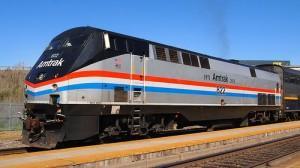
On my way back from New York to D.C. at the end of the weekend, I was scanning my Google alerts when I noticed a piece called “Thailand’s government pushes for transport transformation.”
The Southeast Asian nation has announced plans to spend $60 billion on improvements to rail, rapid transit, and port systems, the article said. It did not give a timeframe, and reported that funding sources were being sought, but still, it got me thinking: Where does the U.S. stand in its rail development?
Booked well in advance, a one-way ticket to New York costs about $45 (Amtrak spikes prices horrendously for last-minute travel) and takes about 4.5 hours each way. The train takes about 45 minutes longer than driving in moderate traffic — although parking would eat up some of that difference.
At a distance of 225 miles and $4/gallon, it costs about $36 in gas to drive a car from D.C. to New York, assuming 25 miles to the gallon.
Roads are subsidized (as are trains) and cars need maintenance, insurance and upfront investment. There are a lot of hidden costs to all this calculus, but it’s a no-brainer that the emissions from a driving trip are more than when taking the train.
A 2008 Salon article about a UC Berkeley study on emissions (found here) breaks it down:
For example, the researchers found that transportation via Caltrain, a system similar to Amtrak, produced less than half the greenhouse-gas emissions per passenger mile than by driving a sedan.
America’s relationship with rail is deeply entwined with its relationship with roads.
Train travel and car travel have been battling for decades, from the destruction of the redcar lines in Los Angeles to make way for more cars in the 1950s to the current federal transportation budget, but we could be on the verge of changing the paradigm.
High-speed rail is a “critical part of [the Obama administration’s] vision for modernizing America’s transportation network,” according to the Department of Transportation.
Even with that mandate, changing to rail will be a slow process. Already $2.5 billion has been earmarked toward a six-year, $47-billion investment plan.
On the other hand, the same six-year budget includes $305 billion to rebuild roads and bridges.




